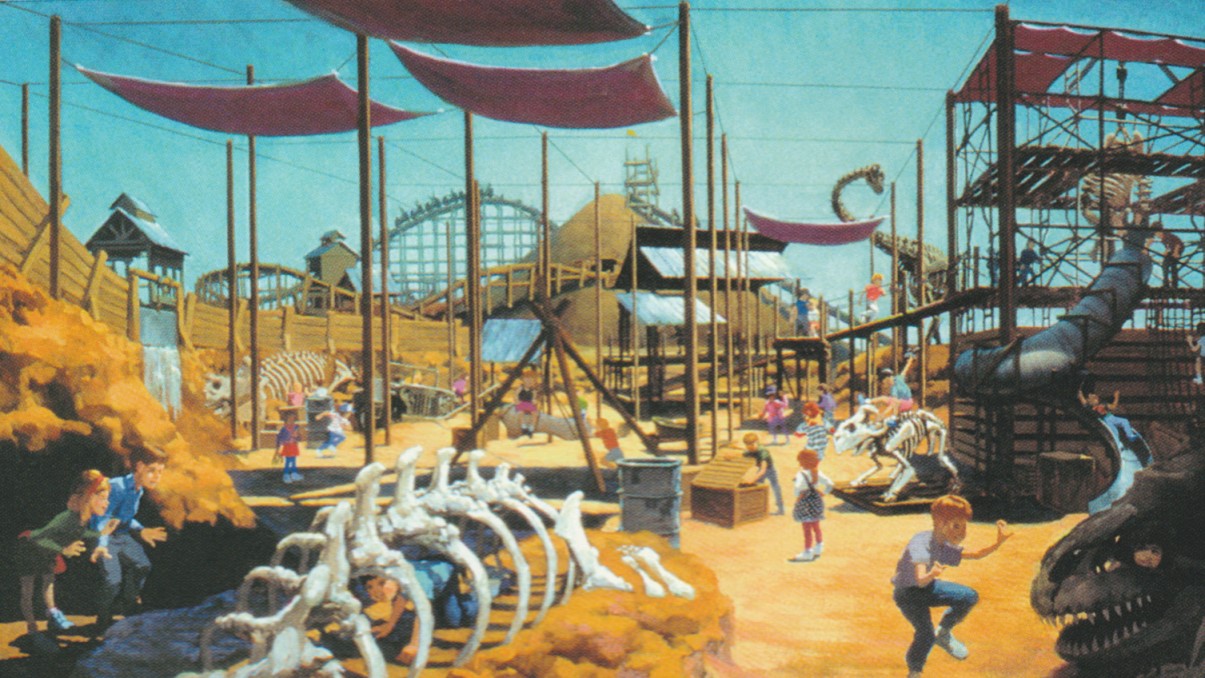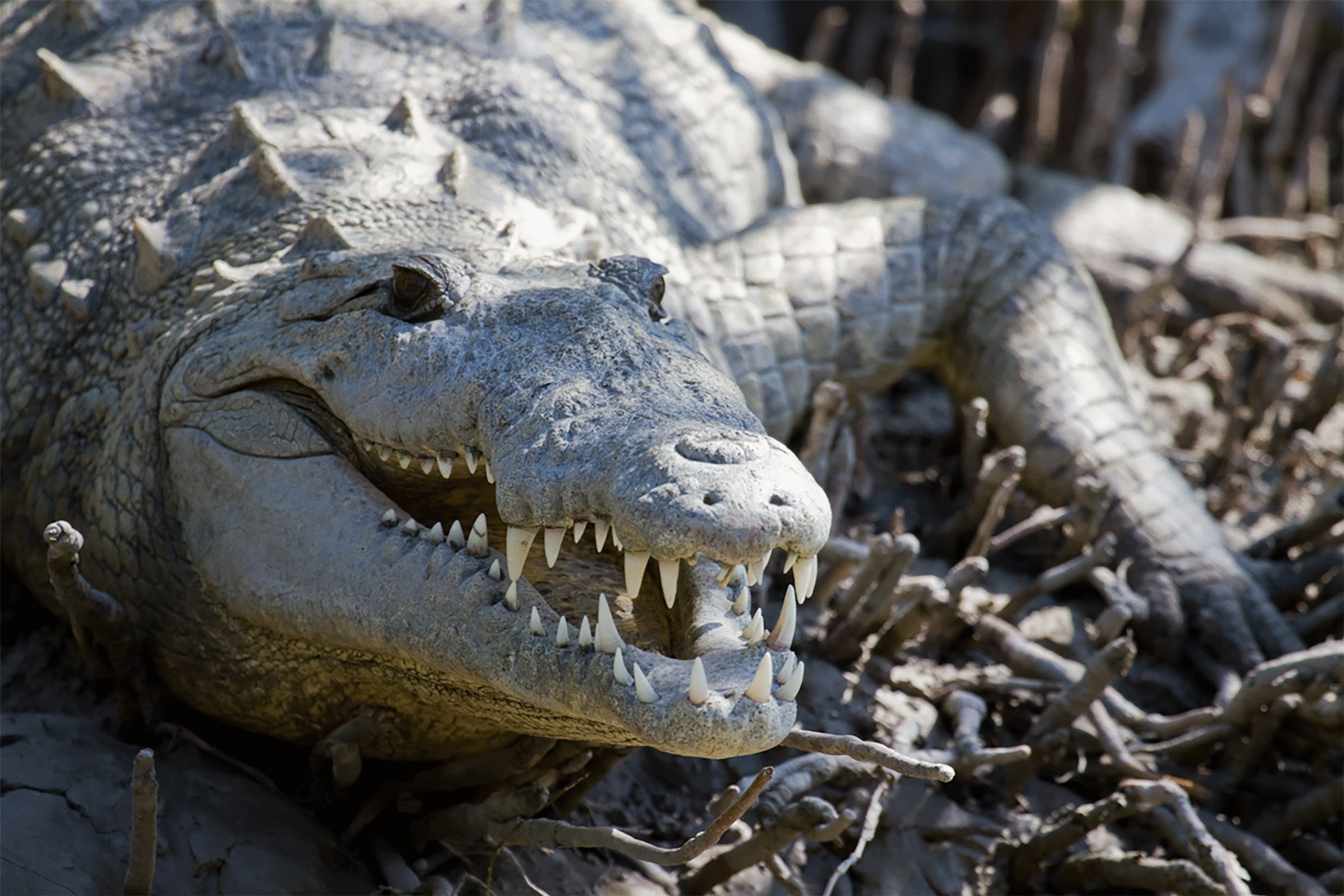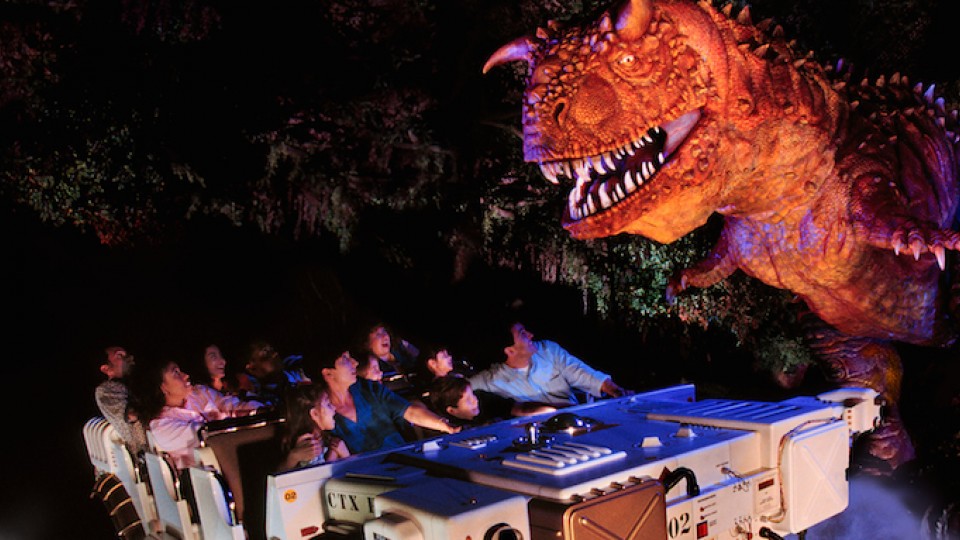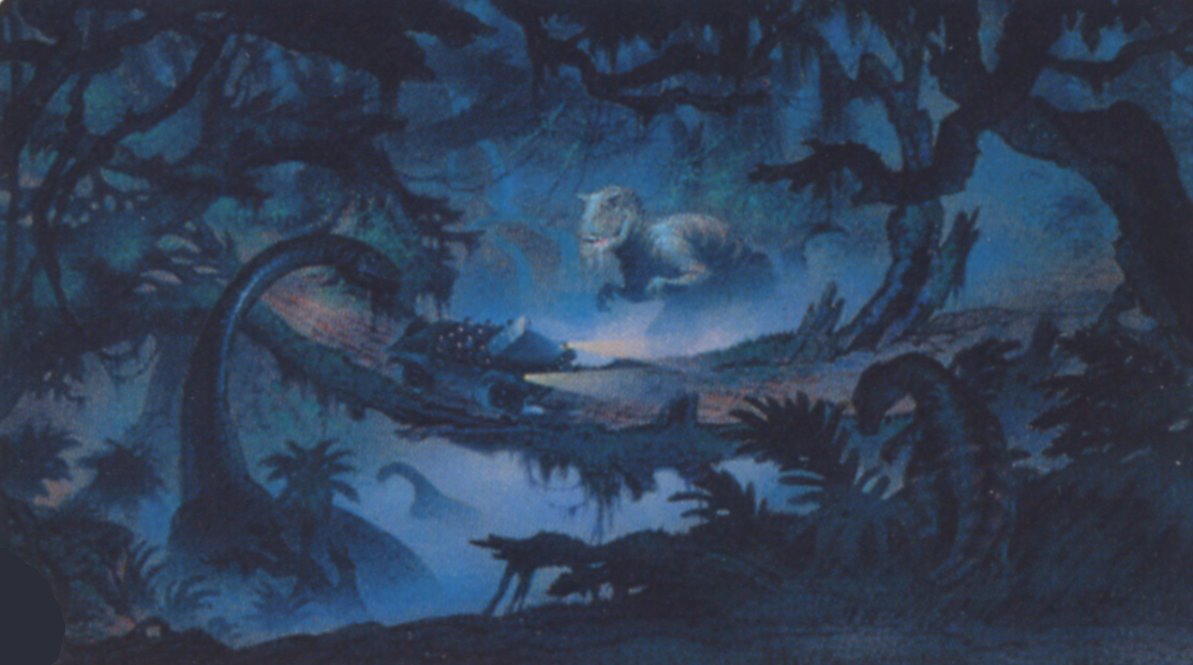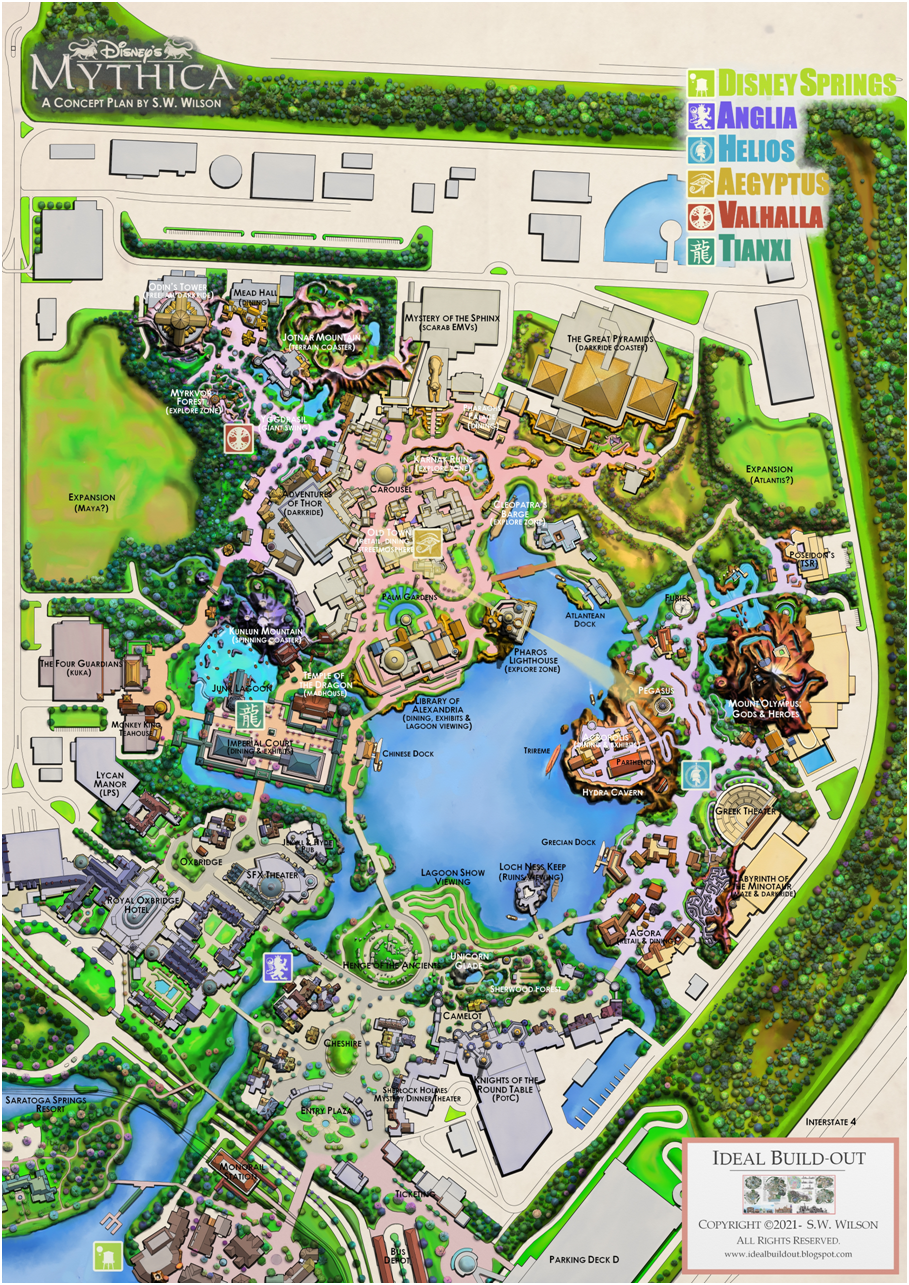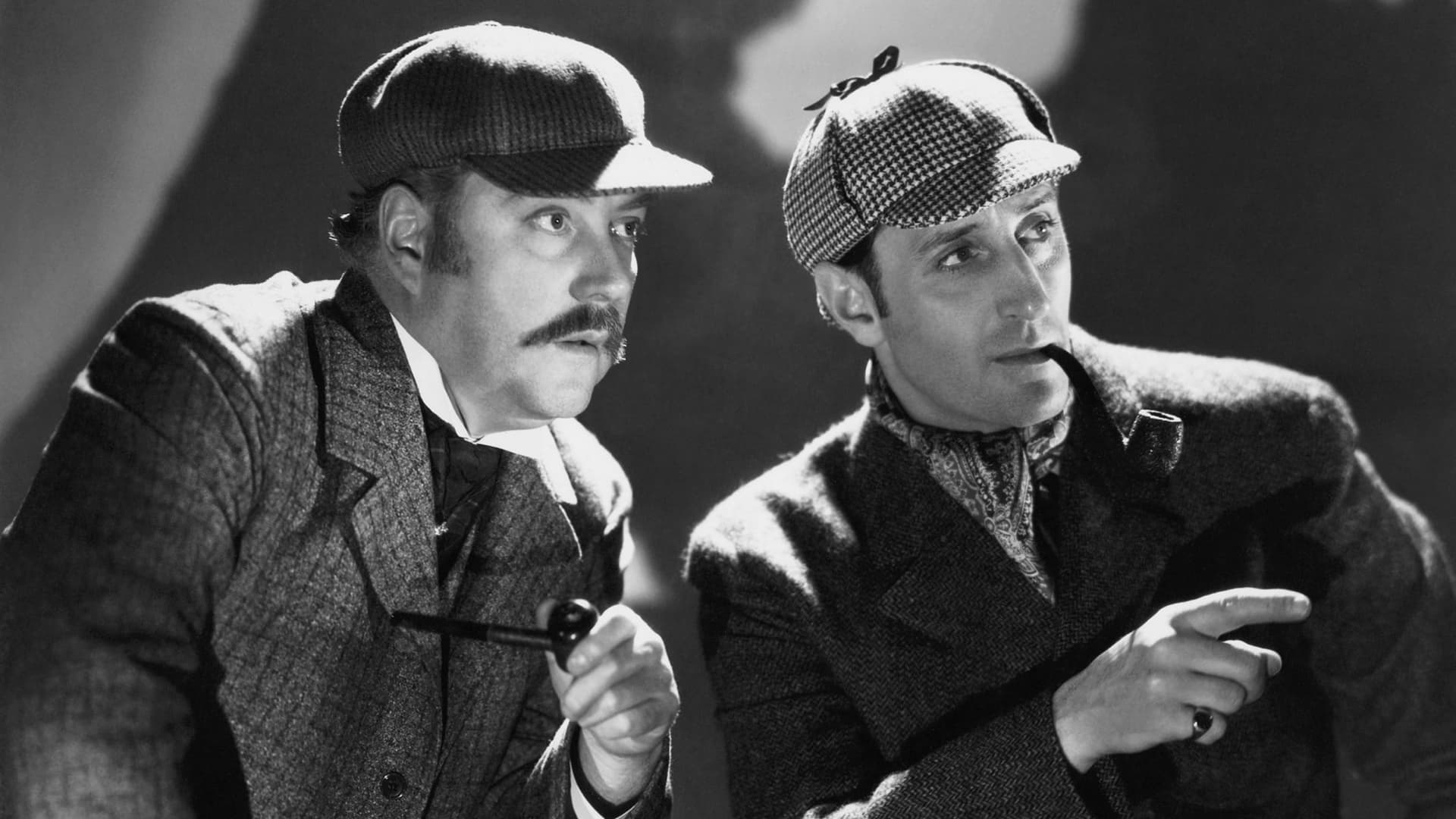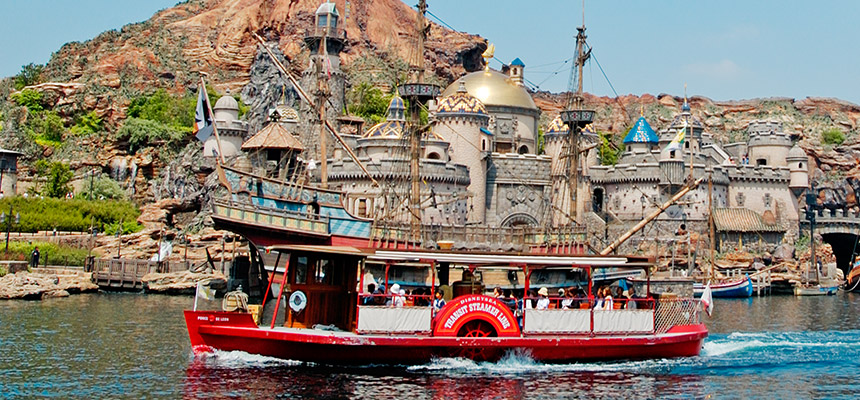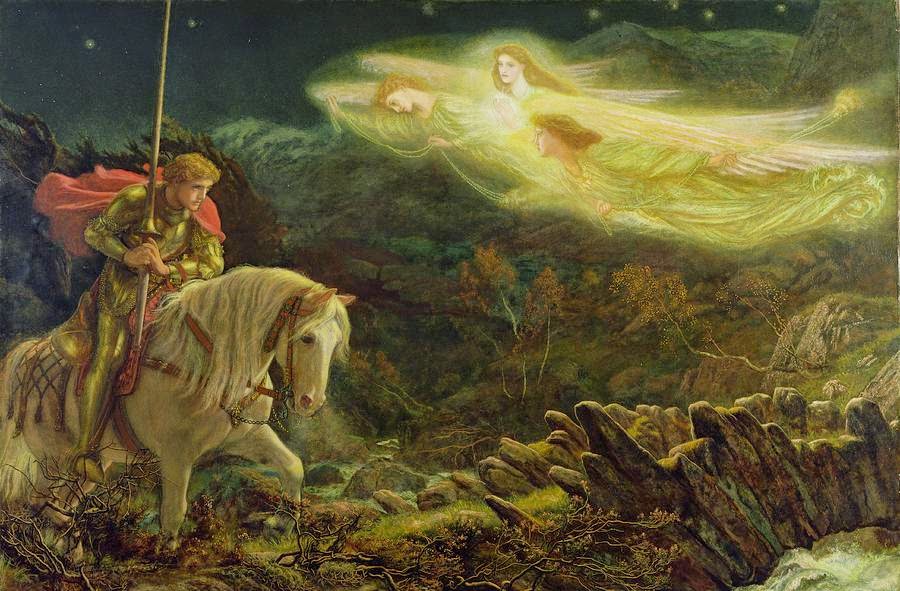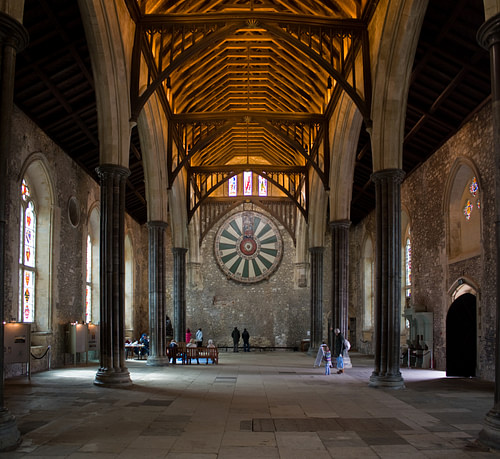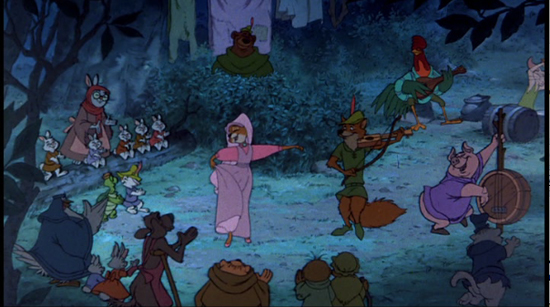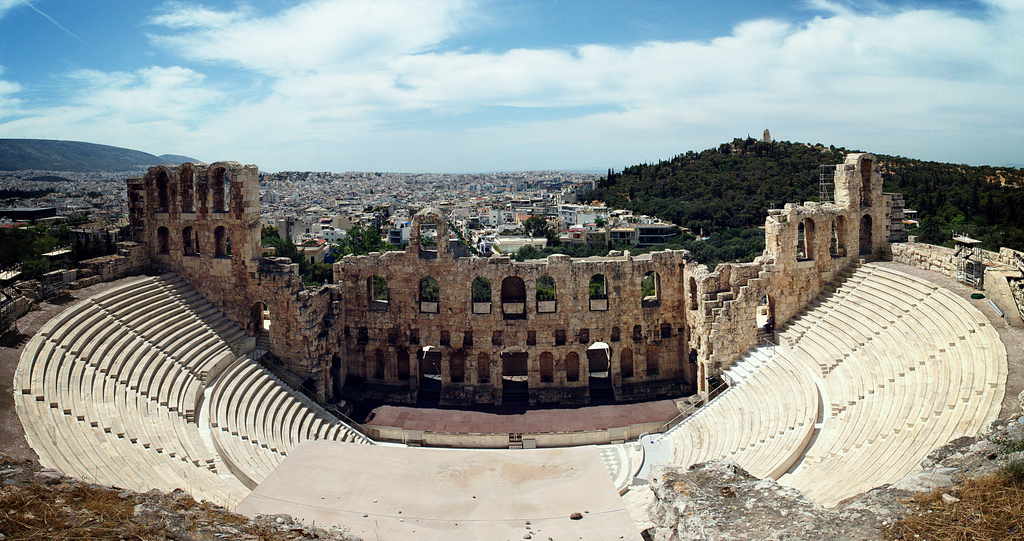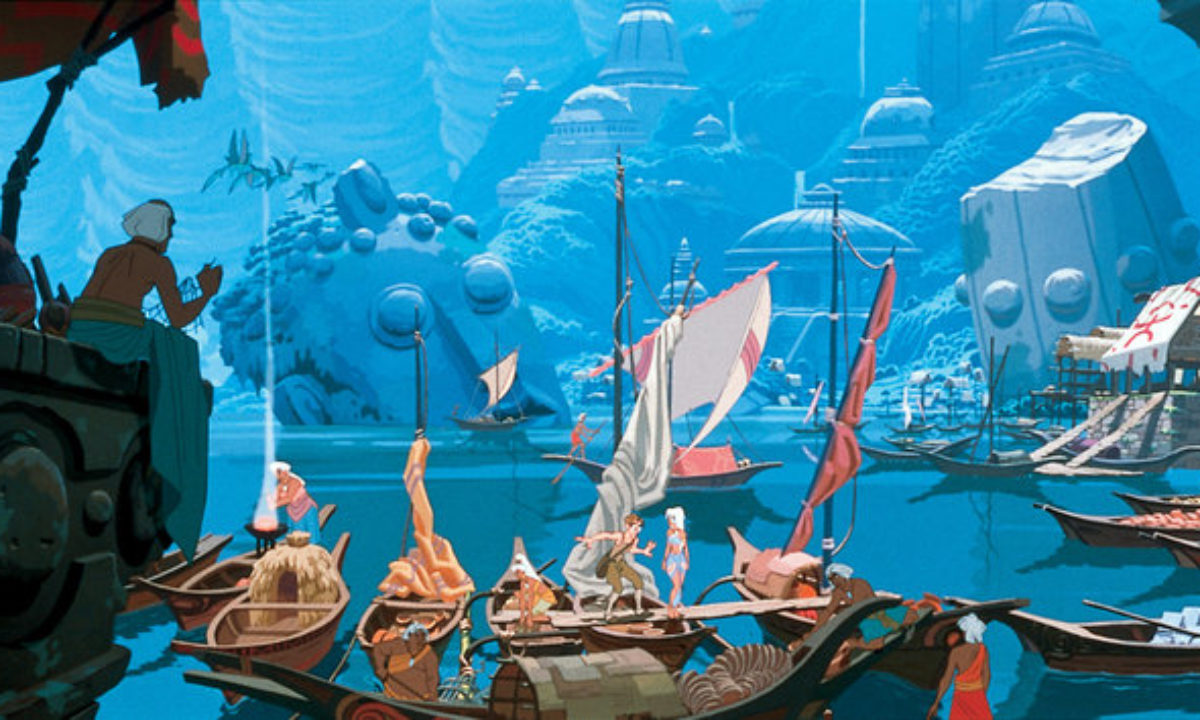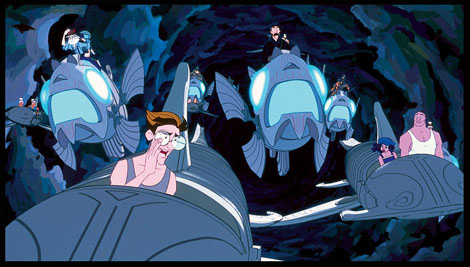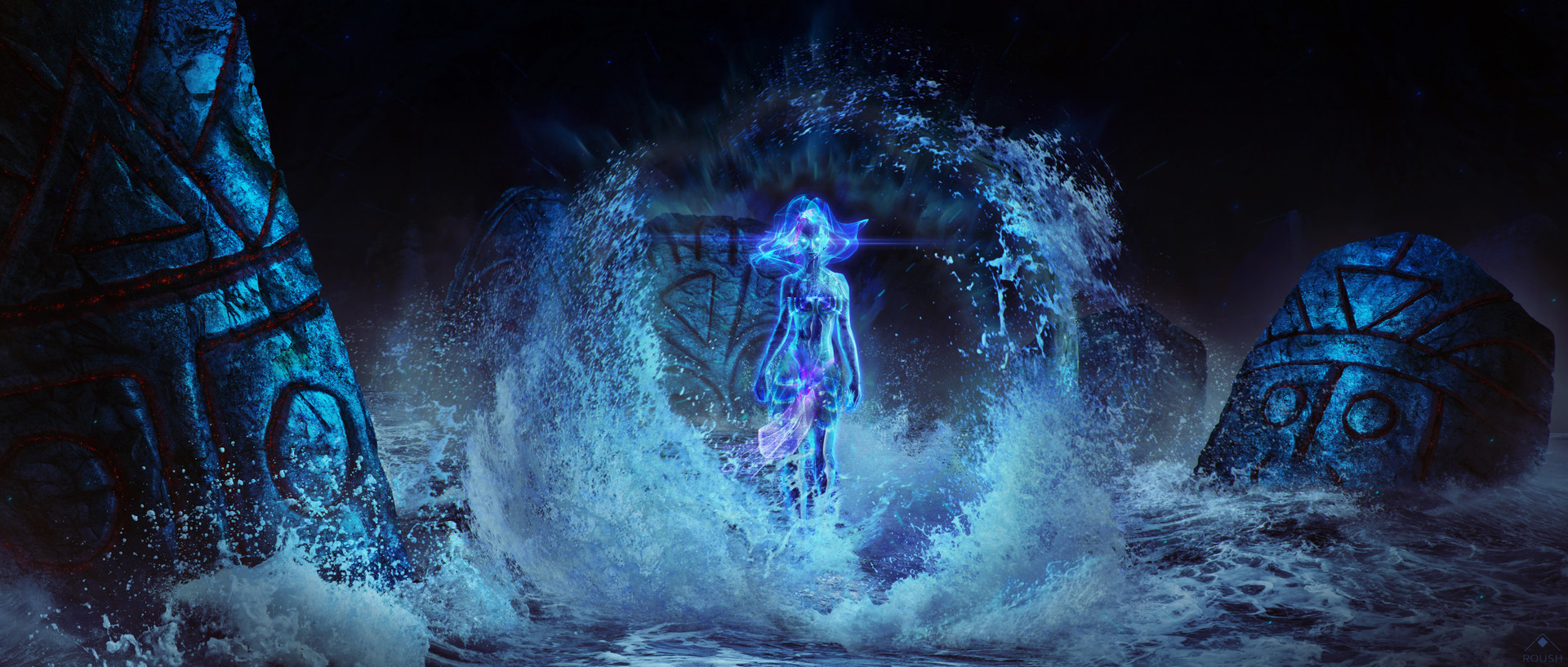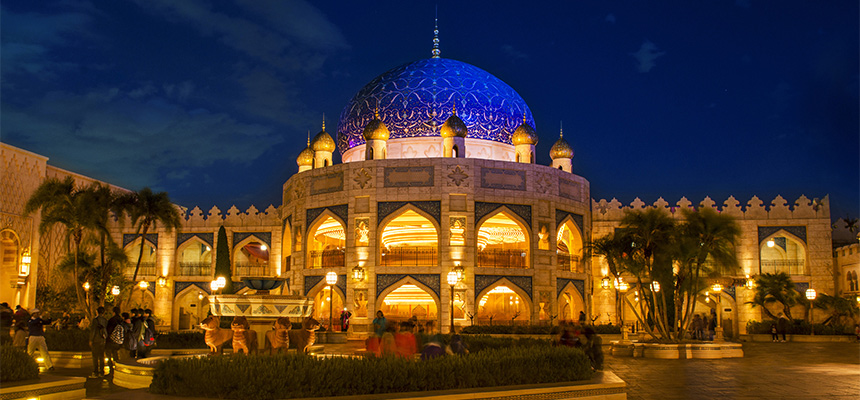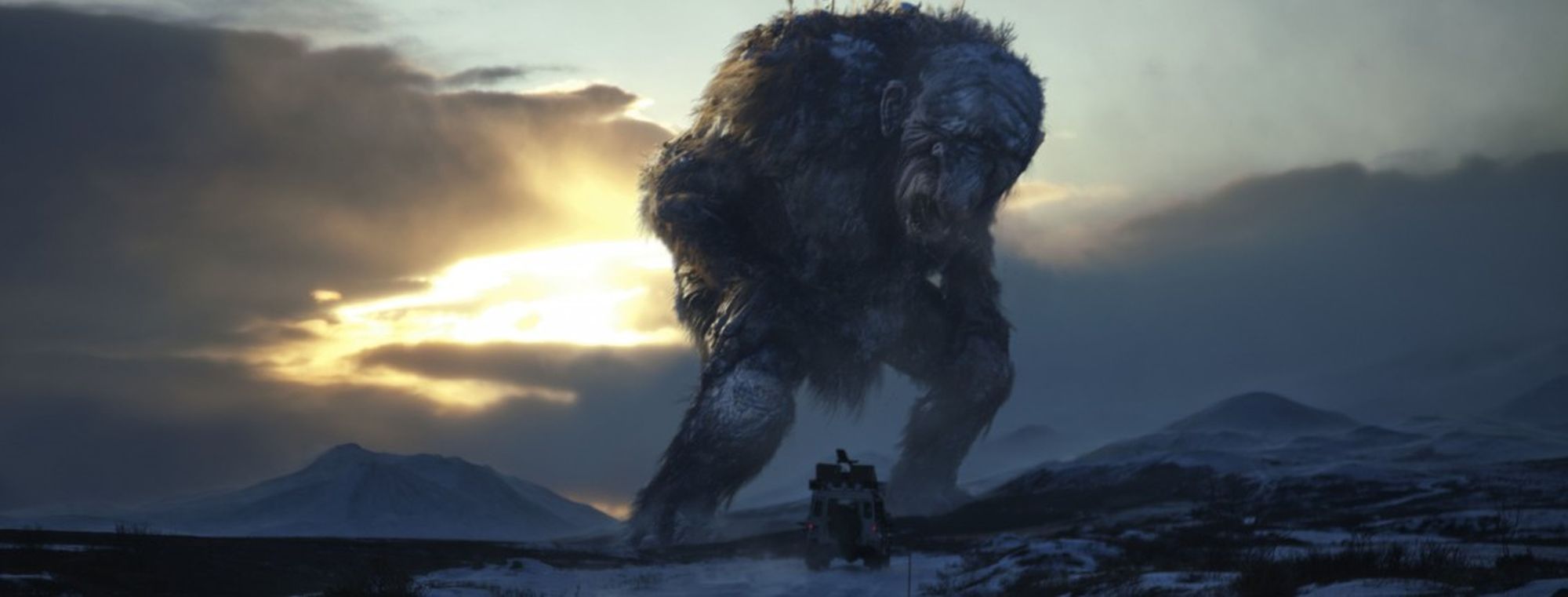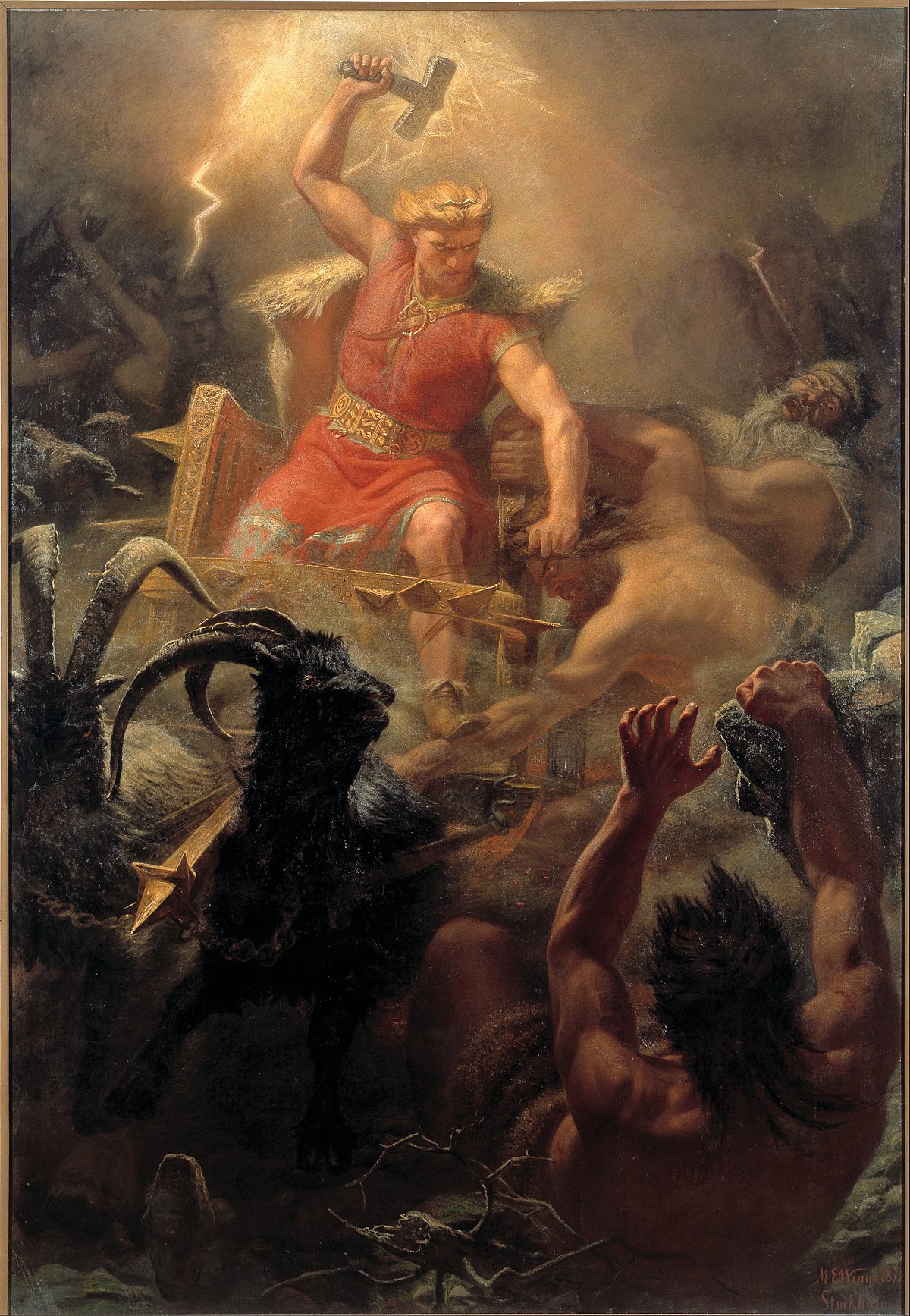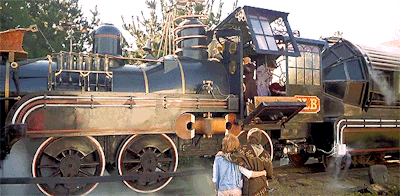And now, here's the final land of Disney's Animal Kingdom!
~ ~ ~ ~ ~
Dinoland, U.S.A.
In 1947, the quaint American smalltown of Diggs County was just that: quaint. Nothing much happened there. But one day, the town’s sand and gravel company made a shocking discovery. As workers were digging up sand to load into a waiting dump truck, they uncovered a massive dinosaur bone. All were amazed at this revelation, and with eager hearts, they kept digging around the site to find not just a wealth of bones, but a plethora of perfectly-intact dinosaur skeletons! This piqued the interest of one of the workers, an amateur fossil-hunter, and he soon teamed up with fellow scientists to buy up the property where the bones were found. On that property, they established the Dino Institute, a research and study center for all paleontologists. The property itself was soon affectionately dubbed “Dinoland, U.S.A.” by the scientists who worked at the Institute.
One of those scientists was a wealthy benefactor who became obsessed with why so many perfectly preserved dinosaur skeletons could be found in this one spot. The only way to solve this particular mystery was to travel back in time and then attempt to observe whatever it was that actually caused this massive dinosaur extinction. The wealthy benefactor thus helped pour billions into the creation and funding of the Dino Institute, whose research resulted in the invention of the CTX Time Rover. To this very day, Dinoland, U.S.A. invites one and all to come and explore at their perpetual Open House, so that they may see the latest and greatest in what the Institute is learning about these prehistoric beasts.
The atmosphere in Dinoland is bustling with discovery and fun. Excavation gear is found almost everywhere. Flyers and posters advertise the latest goings-on at the Institute. The sounds of excavation can be heard for miles. And speaking of sounds, the Institute even has its own radio station, where the two DJs, Digger and Bonehead, plays a wide variety of tunes about dinosaurs, bones, digging and anything with even the vaguest of connections to the Institute’s line of work. For example, you can expect to hear “Grazing in the Grass” by Friends of Distinction, “It’s the End of the World As We Know It (and I Feel Fine)” by R.E.M., “I Feel the Earth Move” by Carole King, “Bad to the Bone” by George Thorogood and the Destroyers, and of course, “Walk the Dinosaur” by Was (Not Was). Oh, and that song featured at the start of this post? That is an original piece made specifically for Dinoland!
The site where the dinosaur bones were found has been turned into a full-blown excavation site, dubbed “The Boneyard” by the paleontologists. The Boneyard is an open-air playground made to look like an archaeological dig site. In fact, in addition to the usual slides, rope bridges, caves and other playground detritus, there’s also a large dig site, with the bones of a Columbian mammoth, a Triceratops and a Tyrannosaurus rex buried beneath the sand. The Boneyard is marked by a bridge from which stands the skeleton of a proud Brachiosaurus.
It seems only fitting that The Excavator take up residence right nearby this dig site. Back in the days when Dinoland was nothing more than a dig site for Diggs County’s sand and gravel company, the Excavator was a pivotal piece of machinery: a series of ore cars that had once been used to haul materials up out of the heart of this pit to the area where the dump trucks got loaded up. Over time, due to over-digging and as the sand in the pit began to shift, the Excavator became unsafe to operate. The sand and gravel company then shut down the ore cars and the Excavator stood empty and abandoned for a few years, becoming even more rickety and unsafe. Then, when the Dino Institute was set up, the wealthy benefactor sent in groups of college students to work on the site. These college students then decided to put this old and unsafe piece of mining equipment back to work again, allowing them to use the old, rusty ore cars to haul some of the larger dinosaur bones that they’ve discovered. If only they could take the time to fix up the rusty old thing…
As guests move through the queue for this attraction towards the load area, they walk past dozens of “Condemned” signs in addition to all sorts of safety barriers that the sand and gravel pit’s workmen had set up that the college students have recently pulled down. The ride itself is a wooden roller coaster that takes guests past antiquated pieces of mining equipment, dodging around massive dinosaur bones and fossils, giant dinosaurs made out of metal and discarded machinery, and careening through unstable mine shafts that could collapse at any moment. This wild and crazy ride is similar to that of the Seven Dwarfs Mine Train or Thunder Mesa Railroad over at the Magic Kingdom, or Big Grizzly Mountain over at Hong Kong Disneyland.
Not too far from The Excavator is a large rocky mountain, covered in snow. At the top of this mountain, the rockwork is carved in the shape of the front half of a wooly mammoth; its trunk raised up triumphantly toward the sky. A cavern is found within this mastodon formation, with a roaring waterfall spilling out of the cavern and into an icy lake below. Within this mountain is Disney’s Animal Kingdom’s secondary water thrill ride: Mammoth Falls. In this ride, we glide back in time, to the world that once was; a world that trembles beneath giant feet. Strange mammals and hulking creatures thrive among the subtle populace of early man. Sabre-toothed cats and monstrous wolves stalk their prey. The mammoth, mastodon, ground sloth and wooly rhinoceros graze amidst the frozen tundra. It all climaxes with a dramatic, 50-foot plunge into the lake! And if that wasn’t enough, in a style similar to Shipwreck Falls at Six Flags parks around the world, the splashdown causes a wall of water to shoot up into the air, absolutely drenching guests…and anyone foolish enough to be standing nearby!
Across the street from these three attractions, almost hidden behind the trees, guests will come across Restaurantosaurus, which serves as the mess hall for the workers at the Institute. The restaurant is noted for its décor, as it features skeletal replicas of several dinosaurs and mosaics of every era of the dinosaurs along the walls of the restaurant.
Further down the path is a special animal exhibit set up by the Dino Institute, highlighting a few special animals… Modern Dinosaurs. The animals presented here are animals who may be descended from the dinosaurs, as well as animals who are in grave danger of ending up like the dinosaurs… extinct. First, we have the American crocodile, who is vulnerable to endangerment. The American crocodile exhibit will be designed with inspiration taken from the Floridian mangrove forests found within its natural range. Guests will be able to see the crocodile swim throughout its exhibit or sunbathe on either land or upon the artificial tree branches submerged within the exhibit’s pool. The dense foliage will transport guests into the mangrove forests, and the sounds of other native animals are heard in the distance as if the guests really stumbled onto a pond in the wilderness. Guests will be able to see a small research area comparing crocodiles, alligators, and their ancient ancestors to each other.
Next, we have the Southern cassowary, a creature at least concern for endangerment. Although the Southern cassowary seems gentle, watch out! Much like their velociraptor ancestors a swipe from their claws will leave any foe dead. These birds are truly descendants of the mighty dinosaur. The exhibit for this bird will be designed as a thick Australian rainforest with various fruit trees planted within the exhibit providing the animal with an authentic cycle of fruits throughout the year. This exhibit will accommodate the cassowaries’ unique defensive maneuvers. The viewing area will be housed within a research camp with glass walls separating the guests from the bird safely. This research camp theme will provide for various learning experiences to be housed such as a cassowary claw and dinosaur claws being on display highlighting their similarities.
Housed within the same exhibit are two different animals. First is the Abdim stork, which is at least concern for endangerment, and then, we have the critically-endangered Asian brown tortoise. The reason why they share the same exhibit is because their space will come with a display demonstrating how birds are more related to dinosaurs than reptiles.
As part of this new exhibit space, the crocodile exhibit will be moved to a bigger, more expansive space, as detailed above. As for the old space, that has been converted into an exhibit for the shoebill, a creature vulnerable to endangerment. The shoebill is a carnivore, eating mostly fish; it is diurnal, and its natural range is throughout Central Africa. It is an unusual looking bird, and even more unusual is the sound that it produces, reminiscent of that of what dinosaurs have been believed to sound like. Similar to the rest of exhibits within the land there will be a comparison to an extinct species. The head of a shoebill and phorusrhacid will be on display to highlight both the differences and similarities of the two different yet similar looking species.
And now, of course, we come to Dinoland’s signature attraction: Countdown to Extinction! On Countdown to Extinction, guests enter the headquarters of the Dino Institute, where its current head, Dr. Helen Marsh (played by Phylicia Rashad), promises a calm ride through the early Cretaceous Period aboard the Institute’s fleet of Time Rovers. However, her associate, the eccentric Dr. Grant Seeker (Wallace Langham), has hijacked the plans and wants to use our journey to rescue an Iguanodon from extinction. Oh, and did I mention the timeframe he’s sending us into is right before the meteor hits?
The trip takes guests on a frantic chase through dense prehistoric jungles, forests and swamps, as they catch glimpses of broad displays of different dinosaur species, most of which get in near misses with the Time Rovers. For example, guests deal with a Pterodactyl swooping down at the Time Rover and a Compsognathus leaping over the vehicle as it passes by. And that’s not even considering that we have to deal with volcanic eruptions, feasting Alioramus and attacking Velociraptors! If that’s not enough, guests also have to deal with crashing meteors and several encounters with a Carnotaurus, who sees the guests as his prey.
Countdown to Extinction was made in the wake of the resounding success of the Indiana Jones Adventure EMV at Disneyland; and its subsequent arrival in the Magic Kingdom. Tasked with going above and beyond the lofty standards of Indy, the Imagineers succeeded immensely. Just as Indiana Jones places us in the midst of a temple fraught with booby traps, Countdown to Extinction takes us into the twilight of the Age of the Dinosaurs, where danger and peril is around every corner! Making full use of unique lighting, smoke, some of the roughest EMV moment in any theme park attraction, a unique soundtrack and some of the scariest and advanced Audio-Animatronics in Disney history, Countdown to Extinction is an E-ticket, and then some!
~ ~ ~ ~ ~
And thus, we have Dinoland, U.S.A.! Our main walkthrough of Disney's Animal Kingdom is over! The recap post will be out tomorrow, as well as a post detailing how many animals one can find here at the park!
I should point out that "Modern Dinosaurs" came from an idea for the One Little Spark Competition back in 2019, created by
@kmbmw777,
@Miru,
@NateD1226,
@Pi on my Cake,
@tcool123 and
@AceAstro. Likewise, the idea to include Mammoth Falls came from S.W. Wilson's
parallel Ideal Buildout concept and the description was borrowed from
@MANEATINGWREATH's description of the "Ice Age" railroad diorama from his 2017 Dream Resort thread.

